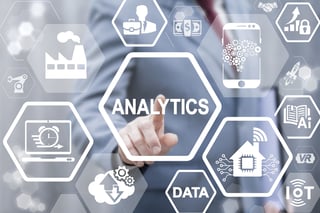
Retail customers expect their shopping experience to be relevant and personalized whether they're shopping online or in-store. As a retailer, you can't deliver that unless you know your customers — both your overall “audience” and the individuals within that customer base. Fortunately, customer tracking and retail analytics enable you to gather the information you need to make that happen.
For example, grocery chains have learned from their analytics that customers now want online and home delivery options. And specialty retailer, Black Diamond Equipment, Ltd., is using artificial intelligence and algorithms to expedite online shopping, predicting each visitor’s desires and instantly presenting them with those items.These are only a few of the countless examples. Want to know more? Here are some ways customer tracking can improve your retail analytics and sales.
The More You Know, the Sharper Your Competitive Edge
Delving deeply into your retail analytics will make you a better manager and make your store more successful. You can:
- Become a more efficient merchandiser. Identifying your best-sellers makes it easier to keep these items in stock. You can also choose new products more effectively. With better inventory management, you can reduce or eliminate costly overstock markdowns.
- Plot big-picture patterns of how people shop in your store and identify individual browsing and purchasing behaviors. If customers are bypassing certain areas, you may want to rearrange your fixtures.
- Optimize staffing needs. Based on customer tracking, you can determine how many salespeople you need at any given time and where they should be positioned within the store. It's a financial benefit to you and a customer service bonus for shoppers. The better their experience, the more likely they are to return and also to promote your store in person and online.
Savvy Retailers are Using Every Means at Their Disposal
There are a variety of ways to track your customers and learn about their shopping habits. Here is a handful of them.
- Loyalty programs track purchases. Associated email addresses and/or phone numbers enable retailers to send individually-targeted coupons and offers. Even without a loyalty program, all you need to track a customer’s purchases is their phone number.
- Geofencing technology alerts you when a given customer is nearby or has entered the store. You can text them special use-now offers.
- Offering free Wi-Fi allows you to track in-store movements of shoppers whose phone is online. This data can help you identify overall patterns such as where within the store and how long shoppers browse. Studying your security camera footage can help with this, too.
- Cookies track the movements of online shoppers. You can see where they’re browsing and what they buy, but also what they didn’t buy. Follow-up messages or a coupon may encourage them to make that purchase after all.
- High-systems can even adjust pricing in real time if sales are particularly brisk or slow. This allows you to move merchandise faster while improving margins.
The more you know about customers, the better the in-store experience you can create. And that builds long-term relationships and buyer loyalty. Not to mention, using your retail analytics to provide personally-targeted offers helps shoppers save time and money on products they want and need. Ultimately, customers who believe the retailer knows them and is looking out for them are more likely to return often and buy more when they shop.
